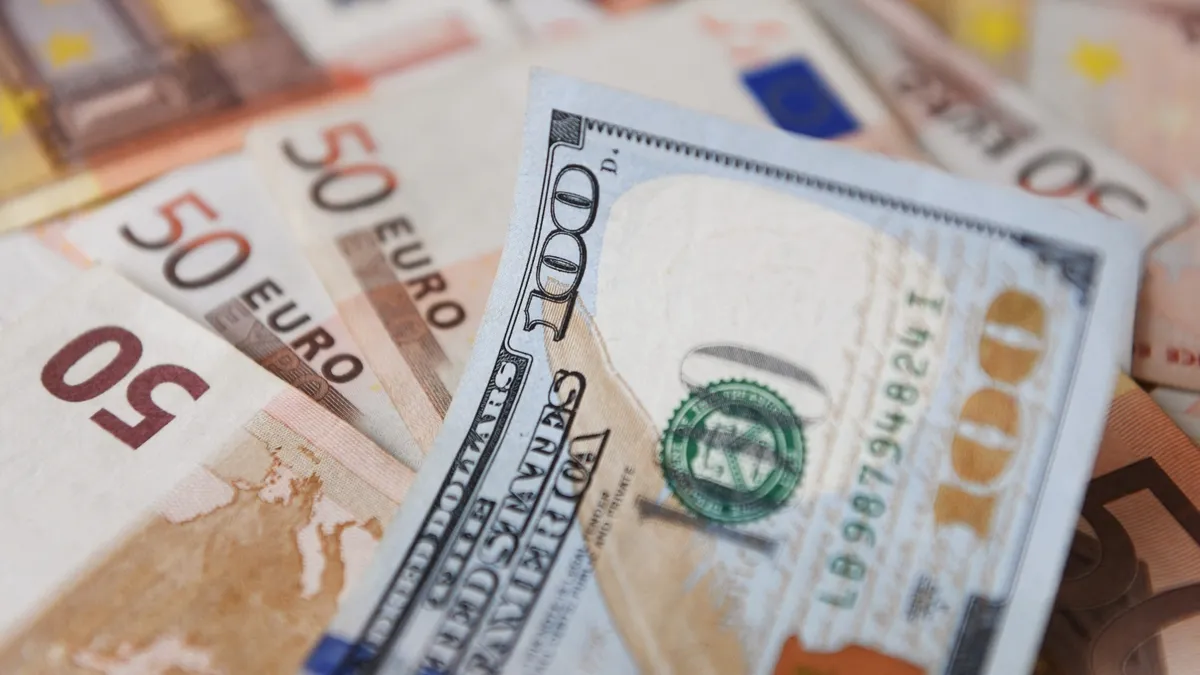
There's perhaps no better symbolic representation of America's financial might than the U.S. dollar. Right now, however, the world's leading currency is experiencing a significant downturn. The dollar has plummeted more than 10% this year, marking its worst decline in the first half of the year since 1973—a year that witnessed President Nixon's shocking decision to detach the dollar's value from gold. This decline reverses a long-standing trend of annual gains for the dollar, leaving many puzzled, especially considering that the U.S. economy remains robust.
Kaspar Hense, a senior portfolio manager at RBC BlueBay Asset Management, notes that while America was already great, the country is now facing a significant re-evaluation of its financial landscape. He highlights that we are coming from a very strong dollar level, a time when U.S. exceptionalism dominated conversations in financial markets. However, many investors now worry that this decline reflects a new reality for the U.S., especially as the nation has recently celebrated its 249th birthday.
A series of chaotic policies and statements from former President Trump—ranging from tariffs to attacks on the Federal Reserve—have shaken global investor confidence in the U.S. This unrest is exacerbated by a ballooning national debt, which is projected to rise even more following the recent passage of a GOP megabill by Congress. Furthermore, deep political divisions raise genuine concerns about the future direction of the U.S. economy.
The critical question now is whether this re-assessment of the dollar reflects a long-term shift or merely a temporary blip. Despite the ongoing turbulence, many investors are left pondering how much longer they can afford to be heavily invested in dollars when they can foresee a potential economic downturn.
Regardless of one's stance on Trump, it is evident that his second term is unfolding quite differently than expected—unsettling many investors both domestically and internationally. The disorganized implementation of tariffs has created widespread uncertainty for businesses across the globe. Trump's contentious relationship with the Federal Reserve and Chair Jerome Powell has further disrupted the long-standing tradition of presidential non-interference in central bank operations. At a time when the nation is grappling with serious financial concerns, Trump signed a substantial bill on Independence Day that will accumulate trillions in additional debt.
The U.S. debt load has been rising for years, dating back to when President Clinton and Congress successfully balanced the budget in the 1990s. Kenneth Rogoff, a former chief economist at the International Monetary Fund and current professor at Harvard, argues that years of inaction regarding rising debt levels are contributing to the dollar's decline. He questions how much investors are willing to remain heavily invested in dollars while they can see potential economic troubles on the horizon.
The response from foreign investors has been telling—they have begun selling American stocks and bonds, which has contributed to the dollar's significant drop. When foreign investors offload shares in U.S. companies, they effectively sell the dollar and convert it back into their local currencies. A widely followed survey by Bank of America shows a stark change in sentiment among global fund managers, with only 23% now favoring U.S. stocks, a marked decline from previous years.
This shift is reflected in global stock market performance. While the S&P 500 has recently hit record highs, recovering from earlier losses due to strong technology sector performance, it is important to note that the index is up just over 6% this year. In contrast, Germany's DAX index and Hong Kong's Hang Seng Index have surged nearly 20% over the same period.
Not everyone views the dollar's decline as a cause for alarm. Some analysts argue that the U.S. has enjoyed an extended period of outperforming global markets, making this recent reversal more of a necessary adjustment than a catastrophe. A well-known market adage, TINA ("There Is No Alternative"), highlights the dollar's unique position as the most widely held currency worldwide, used by governments, multinational corporations, and even illicit organizations.
While a weaker dollar may signal higher travel costs for Americans, it can also benefit domestic tourism and exporters like Apple, which generates significant revenue from international markets. Additionally, American companies that have faced stiff competition from cheaper imports could gain an advantage as foreign products become more expensive due to a weaker dollar and potential tariffs.
So, what does the future hold for the dollar? This question looms large as analysts remain cautious in making sweeping judgments about the implications of its steep decline. Concerns linger regarding whether this downturn reflects a long-term reassessment of the U.S. financial position and whether the dollar's dominance may be waning.
Rogoff, who authored the book Our Dollar, Your Problem, emphasizes that the U.S. has historically relied on foreign investments as a key capital source, which has solidified the dollar's status as the world's reserve currency. However, as the U.S. grapples with persistent issues such as rising debt levels, global perceptions of the U.S. may be shifting. While the dollar's franchise is not gone, it is undeniably weakening.
Rogoff predicts that in the next 10 to 20 years, the world may transition to a more tri-polar system, with the euro, Chinese yuan, and even cryptocurrencies vying to challenge the dollar's supremacy. He notes that the dollar's position as the world's reserve currency has been gradually eroding for at least a decade, and this trend is accelerating under current political leadership.